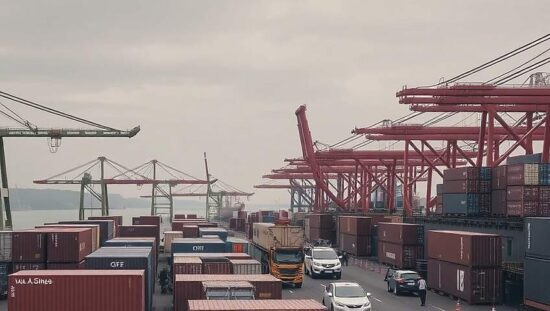Despite stringent EU sanctions imposed following Russia’s invasion of Ukraine, German businesses have continued to engage in substantial trade with Moscow, raising questions about the efficacy of sanctions regimes and potential loopholes. An analysis by the Committee for Eastern Economic Relations, reported by Politico, reveals that German companies imported goods valued at €847 million from Russia in the first eight months of this year. Key imports included metals, fertilizers and foodstuffs.
The German Ministry for Economic Affairs, responding to Politico’s inquiries, acknowledged the limitations of the current sanctions framework. Officials clarified that the measures do not constitute a complete trade embargo, with certain provisions involving tariffs and quotas, particularly concerning specific metals. Remarkably, the ministry admitted that the government supports phasing out or significantly reducing these quota regulations by 2028, effectively allowing continued, albeit restricted, trade. An example cited was the limited exemptions for specific steelware products despite an existing import ban on Russian steel.
Parallel to these imports, German exporters shipped goods worth €4.9 billion to Russia during the same period. These exports primarily comprised pharmaceuticals, medical technology and other humanitarian supplies, categories explicitly exempt from sanctions. While overall exports to Russia have declined significantly since the commencement of hostilities, the continued flow, particularly in these essential goods categories, underscores a complex and, for some political analysts, concerning reality.
The evolving geopolitical landscape is also reshaping Germany’s trade priorities. Poland has emerged as a pivotal trading partner, solidifying its position as the most important market in Eastern Europe. Exports to Poland surged by 5.2% year-on-year until the end of August, reaching a cumulative €65.4 billion, surpassing China for the top spot within Germany’s export destinations. The widening gap, reaching almost €11 billion, reflects a strategic realignment and Poland’s increasing importance in German trade.
Overall, Germany’s foreign trade with Central and Eastern Europe, plus Central Asia, has increased by 2.5%, reaching nearly €364 billion. Exports have grown by two percent, while imports have also shown an upward trend, with Poland and the Czech Republic at the forefront. This underscores the critical role played by these nations in supporting the German economy.
“The Central and Southeastern European EU member states are vital pillars of the German export economy” stated Michael Harms, Managing Director of the Committee for Eastern Economic Relations, to Politico. However, the continued trade with Russia, coupled with the reliance on Eastern European partners, creates a delicate balance, prompting scrutiny regarding Germany’s broader strategy towards Russia and the potential vulnerabilities inherent in its increasing dependence on specific regional markets. The ongoing debate centers on whether the current approach sufficiently addresses both economic and geopolitical imperatives.





